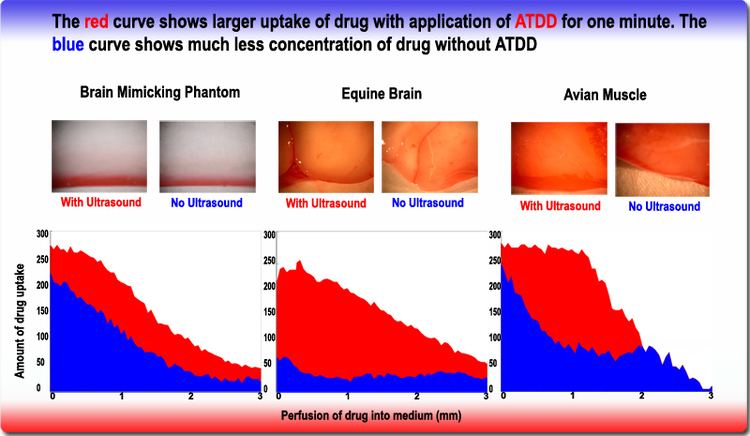 | ||
Ultrasonic drug delivery or acoustic drug delivery is the use of ultrasound to enhance the transport of molecules into or through biological tissue. This is a form of therapeutic ultrasound and frequencies used range from 1-20 MHz with an intensity of up to 30 watts/cm2 Use in conjunction with local drug delivery by injection, topical application and convection enhanced delivery shows promise to significantly enhance the treatment of various diseases in the human body by specifically targeting the drug on a particular tissue.
Focused ultrasound similar to high intensity focused ultrasound, but at much lower powers is applied to tissues in conjunction with the local application of pharmacological agent. The ultrasound source (or transducer) is pulsed on and off, and moved in a defined pattern to sonicate the tissue of interest. The pulsing of the ultrasound serves two purposes: to agitate the tissue matrix by extending and compressing it and to keep the tissue from absorbing too much energy and ablating it, so preventing necrosis. The manual movement of the transducer allows for control of the sonicated volume of tissue and where the drug may penetrate more readily.
It may be applied geometrically, for example with a lens or with a spherically curved transducer, or electronically, by adjusting the relative phases of elements in an array of transducers (a "phased array"). By dynamically adjusting the electronic signals to the elements of a phased array, the beam can be steered to different locations, and aberrations due to tissue structures can be corrected.
